Zambian cuisine is a hidden gem in the culinary world, brimming with hearty stews, vibrant vegetables, and unique flavors that reflect the country’s rich cultural tapestry.
From the staple nshima to the nutty delight of ifisashi, these dishes offer a taste of Zambia’s diverse and flavorful food traditions.
Ready to embark on a culinary adventure? Let’s dive into the 10+ best Zambian recipes you absolutely need to try at least once.
1. Nshima (Maize Meal Porridge)
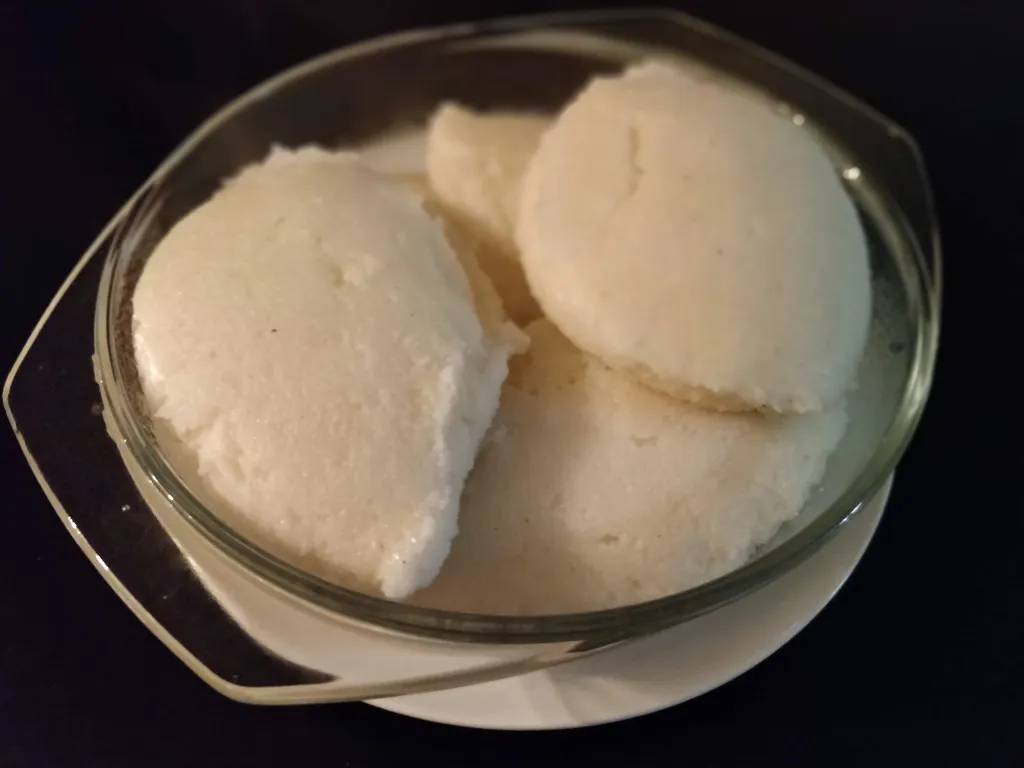
Nshima is the cornerstone of Zambian cuisine, a thick maize meal porridge that accompanies almost every meal.
Made by gradually adding maize flour to boiling water and stirring until it reaches a dough-like consistency, nshima is typically served with various relishes, such as vegetables, meats, or fish.
It’s not just food; it’s a cultural experience, often eaten communally and with the hands.
Ingredients:
- 2 cups maize meal (cornmeal)
- 4 cups water
Preparation:
- Bring 3 cups of water to a boil in a pot.
- Mix 1 cup of maize meal with 1 cup of cold water to make a slurry.
- Slowly add the slurry to the boiling water, stirring continuously to prevent lumps.
- Reduce heat and cook for about 10 minutes, stirring occasionally.
- Gradually add the remaining maize meal, stirring vigorously until the mixture thickens to a dough-like consistency.
- Cover and let it steam for 5 minutes before serving.
Why we selected it
Nshima is more than just a dish; it’s a symbol of Zambian identity and hospitality.
Its versatility and cultural significance make it a must-try for anyone exploring Zambian cuisine.
2. Ifisashi (Greens in Peanut Sauce)
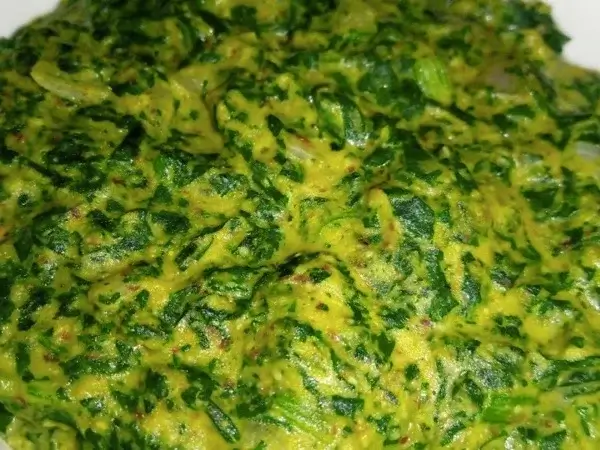
Ifisashi is a flavorful vegetarian dish made with leafy greens and groundnuts (peanuts).
Common greens used include pumpkin leaves, spinach, or sweet potato leaves.
The greens are cooked in a rich peanut sauce, creating a creamy and nutritious accompaniment to nshima.
Ingredients:
- 2 cups chopped leafy greens (e.g., spinach, pumpkin leaves)
- 1 cup ground peanuts
- 1 onion, chopped
- 2 tomatoes, chopped
- 2 tablespoons peanut oil
- Salt to taste
Preparation:
- In a pot, heat peanut oil and sauté onions until translucent.
- Add tomatoes and cook until soft.
- Stir in ground peanuts and a cup of water, mixing well.
- Add chopped greens and simmer until tender, about 15-20 minutes.
- Season with salt and serve hot with nshima.
Why we selected it
Ifisashi showcases the ingenuity of Zambian cooking, transforming simple ingredients into a rich and satisfying dish.
Its unique flavor profile makes it a standout in the realm of vegetarian cuisine.
3. Chikanda (African Polony)

Chikanda, often referred to as “African polony,” is a traditional Zambian delicacy made from wild orchid tubers and groundnuts.
Despite its meat-like texture, it’s entirely plant-based. The mixture is cooked until it solidifies into a loaf, then sliced and served as a snack or side dish.
Ingredients:
- 1 cup chikanda (wild orchid tuber) flour
- 1 cup ground peanuts
- 1 teaspoon baking soda
- 1 teaspoon chili powder (optional)
- Salt to taste
Preparation:
- Mix chikanda flour, ground peanuts, baking soda, chili powder, and salt in a bowl.
- Add water gradually to form a thick batter.
- Pour the mixture into a greased pan and cook over low heat, stirring continuously until it thickens and pulls away from the sides.
- Transfer to a mold or container and let it cool and set.
- Once firm, slice and serve as desired.
Why we selected it
Chikanda is a testament to Zambian culinary creativity, offering a unique texture and flavor that’s both intriguing and satisfying.
It’s a must-try for adventurous food lovers.
4. Kapenta Stew (Tanganyika Sardines)
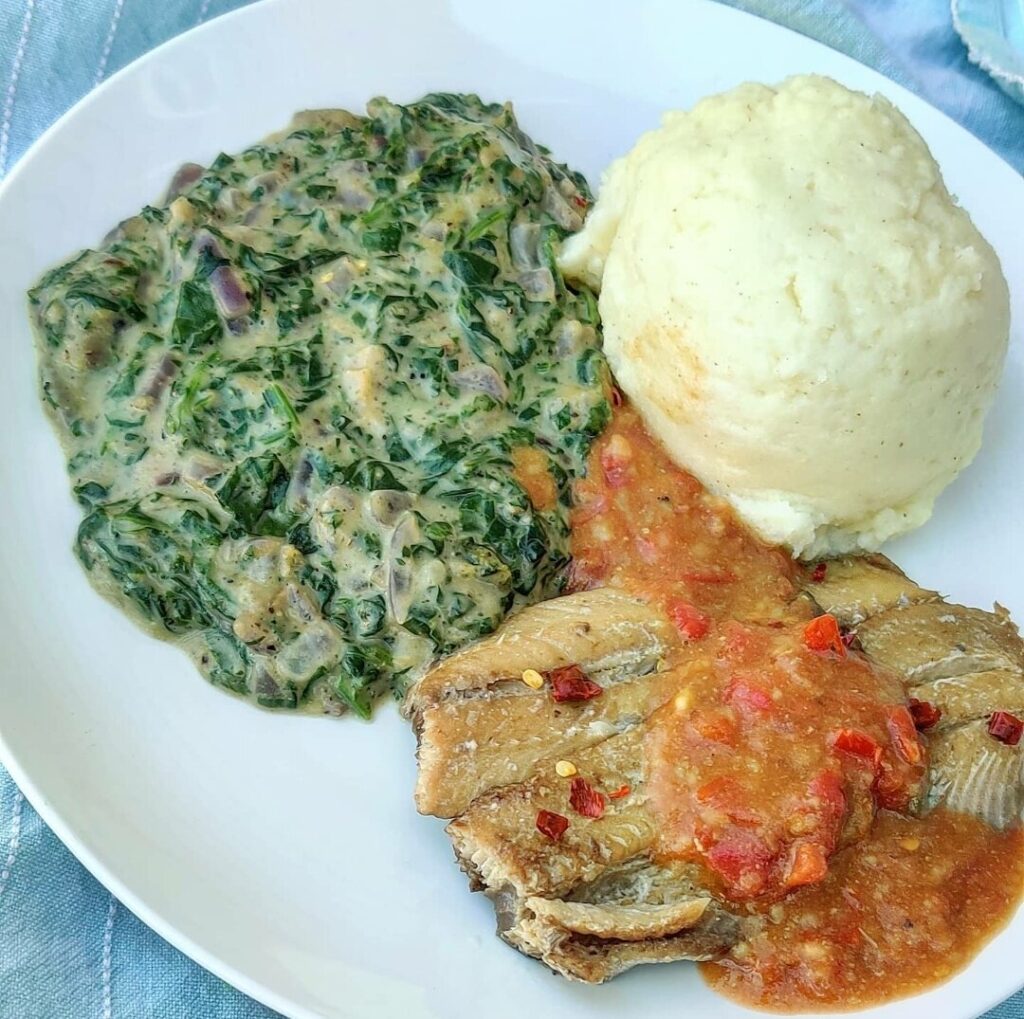
Kapenta are small freshwater sardines native to Lake Tanganyika.
In Zambian cuisine, they’re often dried and then cooked into a savory stew with tomatoes and onions, served alongside nshima.
This dish is a staple in many households, appreciated for its rich flavor and nutritional value.
Ingredients:
- 2 cups dried kapenta
- 2 tablespoons cooking oil
- 1 onion, chopped
- 2 tomatoes, chopped
- Salt and pepper to taste
Preparation:
- Soak dried kapenta in warm water for 10 minutes, then drain.
- In a pan, heat oil and sauté onions until golden.
- Add tomatoes and cook until.
Absolutely! Let’s keep that Zambian flavor train rollin’.
Here are six more iconic Zambian recipes that are as soul-satisfying as they are unforgettable—each one with its own personality and flavor kick. Let’s dive in.
5. Delele (Okra Stew)

Delele is one of those love-it-or-hate-it kind of dishes, mostly because of its slimy texture—but if you ask a Zambian, it’s a comfort food classic! This okra-based stew is simple but flavorful, cooked until it’s silky and a little sticky, which makes it perfect for scooping up with nshima.
Ingredients:
- 2 cups chopped fresh or frozen okra
- 1 small onion, chopped
- 1 tomato, chopped
- 2 tablespoons cooking oil
- 1 cup water
- Salt to taste
How to Make It:
- In a pan, heat the oil and sauté the onions until soft.
- Add tomatoes and cook until they break down.
- Toss in the okra and stir well.
- Add water and simmer for 15–20 minutes, stirring often. The okra should be soft and slightly gooey.
- Add salt and give it a final stir. Serve hot with nshima.
Why we selected it
Delele made the cut because it’s one of the most iconic sides in Zambian food culture.
Whether you’re into okra or not, this dish delivers a warm, homey vibe that hits right in the nostalgia.
6. Lumanda (Wild Spinach in Peanut Sauce)
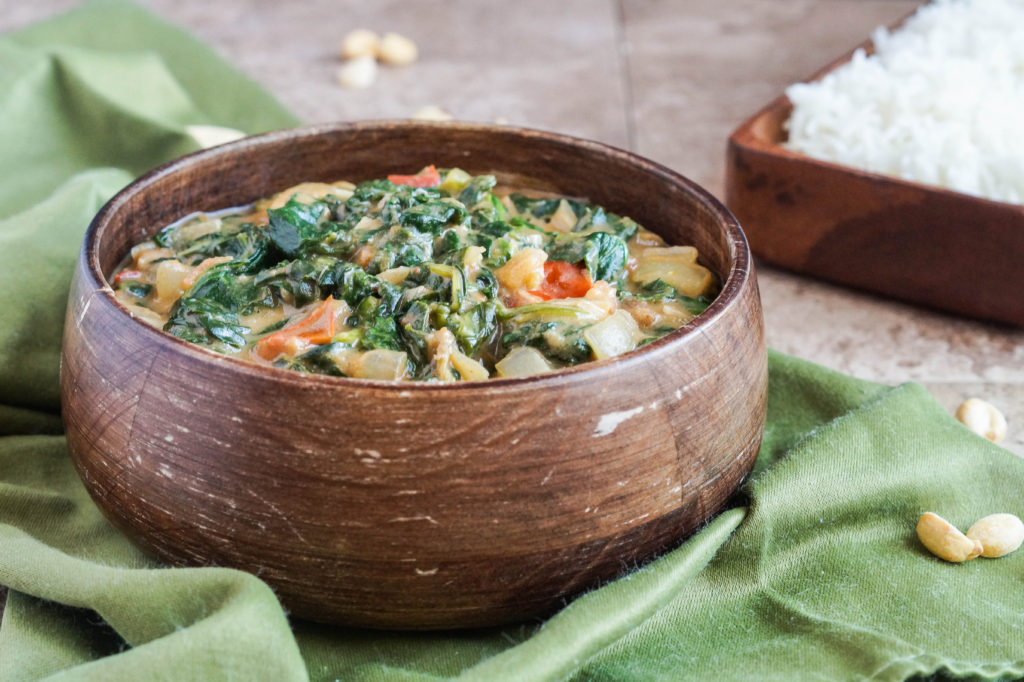
Lumanda is a tangy, leafy green often cooked with ground peanuts for a creamy twist.
It’s not your average spinach dish—it’s got that subtle zing that keeps your taste buds dancing.
It’s usually served with nshima, of course, and sometimes even dried fish.
Ingredients:
- 2 cups chopped lumanda (or substitute with sorrel or spinach)
- 1 cup ground peanuts
- 1 tomato, diced
- 1 onion, chopped
- 2 tablespoons cooking oil
- Salt to taste
How to Make It:
- Heat oil in a pot and fry the onions until golden.
- Add tomatoes and cook until they’re soft.
- Toss in the greens and cook for about 5 minutes.
- Stir in the ground peanuts and a cup of water. Simmer until everything blends into a thick, nutty sauce.
- Salt to taste and serve warm.
Why we selected it
We had to include lumanda because it perfectly blends earthy and tangy flavors with creamy richness.
It’s one of those unsung heroes of Zambian cuisine that really deserves the spotlight.
7. Village Chicken Stew
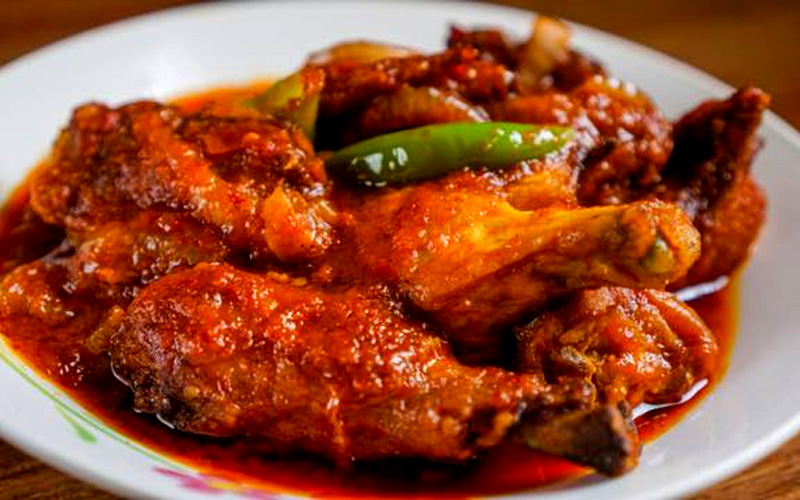
Village chicken, also known as free-range or “road runner” chicken, is leaner and tougher than the supermarket kind—but when slow-cooked, it’s packed with flavor.
This is Zambian comfort food at its finest, especially when paired with a mountain of nshima.
Ingredients:
- 1 whole free-range chicken, cut into pieces
- 2 tomatoes, chopped
- 1 onion, chopped
- 2 tablespoons oil
- 2 garlic cloves, minced
- Salt and black pepper to taste
- 2 cups water
How to Make It:
- In a large pot, heat oil and sauté onions and garlic.
- Add chicken pieces and brown them on all sides.
- Add tomatoes and seasonings, stir well.
- Pour in water, cover, and simmer for 1–2 hours until chicken is tender.
- Adjust seasoning and serve hot.
Why we selected it
Village chicken stew made it on the list because it represents real-deal Zambian home cooking.
It’s humble, hearty, and bursting with deep, slow-cooked flavor.
8. Beans with Tomato and Onion (Zambian Baked Beans)
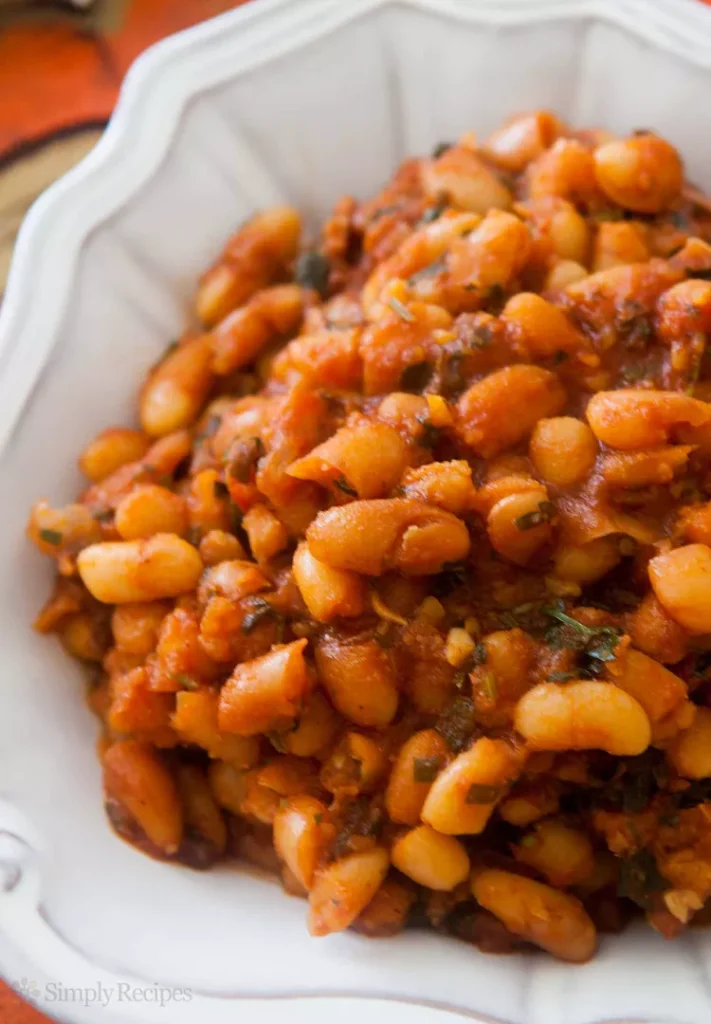
This isn’t your average can-of-beans kind of meal. Zambian-style beans are cooked until creamy, then jazzed up with tomatoes and onions for extra flavor.
It’s hearty enough to be a meal, and cheap enough to feed a crowd.
Ingredients:
- 2 cups dried beans (e.g., pinto or sugar beans), soaked overnight
- 1 onion, chopped
- 2 tomatoes, diced
- 2 tablespoons cooking oil
- Salt and chili (optional)
How to Make It:
- Boil soaked beans until soft, about 1–2 hours. Drain and set aside.
- In a pan, heat oil and cook onions until soft.
- Add tomatoes and cook until thick.
- Stir in beans and cook together for 10–15 minutes.
- Add salt (and chili if you like heat), then serve hot.
Why we selected it
Zambian beans made the list because they’re cheap, cheerful, and totally satisfying. Perfect for meatless Mondays—or any day, really.
9. Dry Fish Stew
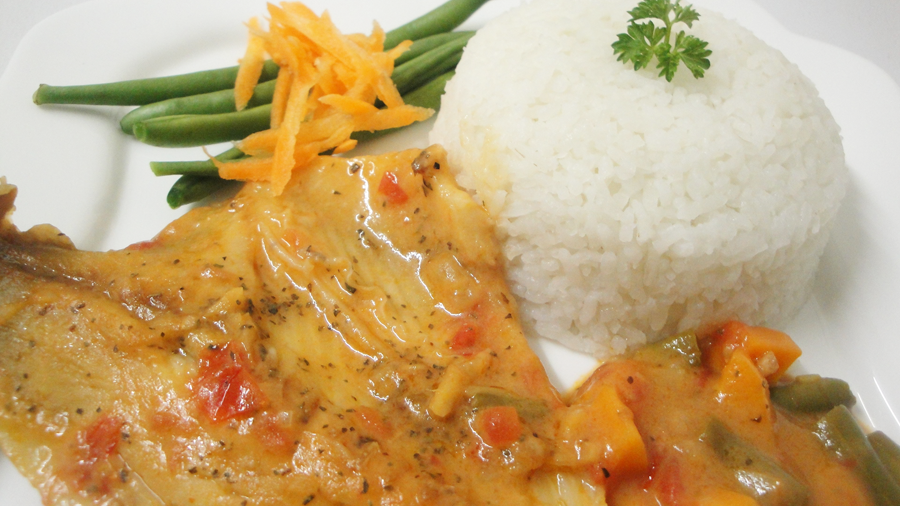
If you’ve never cooked with dried fish, this might feel a little out of left field—but in Zambia, it’s totally normal and super flavorful.
The fish is soaked, simmered, and cooked with onions, tomatoes, and a touch of oil. Simple but unforgettable.
Ingredients:
- 2 cups dried fish, soaked for 30 minutes
- 2 tomatoes, chopped
- 1 onion, chopped
- 2 tablespoons cooking oil
- 1 teaspoon chili powder (optional)
- Salt to taste
How to Make It:
- Drain the soaked fish and remove any bones.
- Heat oil and cook onions until translucent.
- Add tomatoes and chili powder, then stir in the fish.
- Simmer for 20–30 minutes, stirring occasionally.
- Salt to taste, and it’s ready to go.
Why we selected it
We chose dried fish stew because it’s a taste of tradition. It’s one of those dishes you eat once and remember forever.
10. Sweet Potatoes with Groundnuts
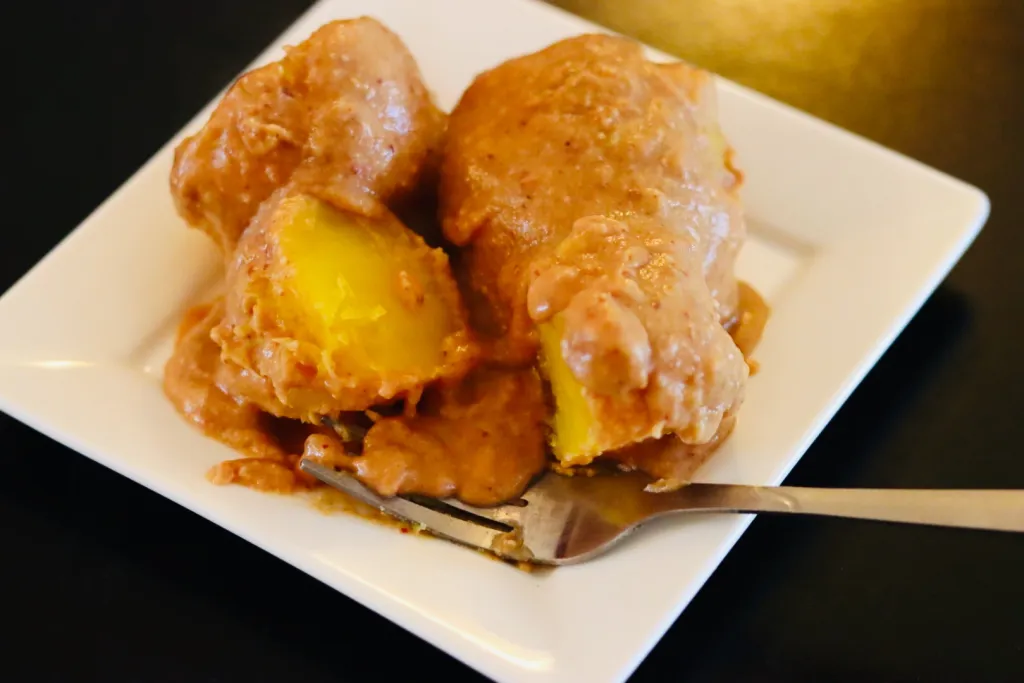
Sweet potatoes are pretty common, but Zambia takes them to the next level by pairing them with creamy, roasted groundnut sauce.
It’s a cozy, slightly sweet dish that works as a side or even breakfast.
Ingredients:
- 3 large sweet potatoes, peeled and chopped
- 1 cup ground peanuts
- 2 cups water
- 1 teaspoon salt
How to Make It:
- Boil sweet potatoes until tender. Drain.
- In a separate pot, mix peanuts and water. Simmer until thick.
- Add salt and then the sweet potatoes. Simmer together for 10 more minutes.
- Serve warm as a side.
Why we selected it
This dish made our list because it’s a beautiful blend of sweet and savory, and totally unique to Zambia.
Sweet potatoes will never be the same again.
11. Cassava Leaves Stew (Katapa)
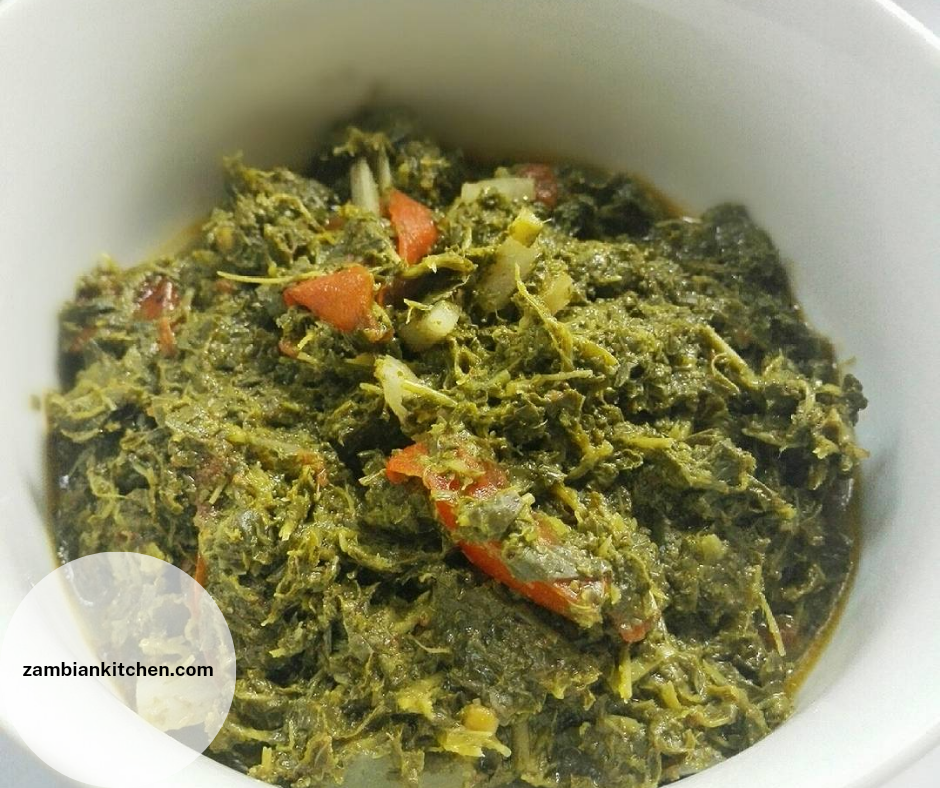
Cassava leaves—yes, the actual leaves, not the root—are a traditional staple across much of Africa, including Zambia.
When cooked right, they become soft, earthy, and pair beautifully with peanuts or coconut.
Ingredients:
- 3 cups cassava leaves, finely chopped (fresh or frozen)
- 1 cup ground peanuts or 1 cup coconut milk
- 1 onion, chopped
- 2 tablespoons oil
- Salt and water
How to Make It:
- Boil cassava leaves in salted water until tender (about 30–40 minutes).
- In a pan, heat oil and cook onions.
- Add ground peanuts or coconut milk and mix well.
- Stir in boiled cassava leaves and simmer 15 minutes.
- Adjust salt and serve with nshima.
Why we selected it
Katapa made it on our list because it’s earthy, rich, and pure comfort in a bowl. If you’re diving into Zambian food, don’t sleep on this leafy legend.
Conclusion
Zambian recipes are the kind of dishes that hit you with big flavor and even bigger heart.
Whether you’re all about the creamy peanut sauces, spicy stews, or the magic of nshima, there’s a little something in here for every food lover to fall in love with.
So go ahead—try one (or all) of these Zambian food classics. Invite your friends over, make a pot of something delicious, and turn your kitchen into a flavor-packed tour of Zambia.
